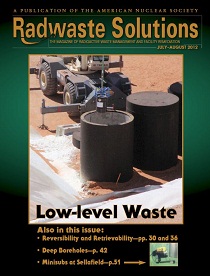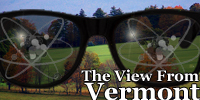Low-Level Waste Management in Radwaste Solutions Magazine
 The July/August issue of Radwaste Solutions is available in hard copy and electronically for subscribers (click "subscribers" link in left column). This issue features articles on low-level radioactive waste management, in addition to coverage of the technology and policy of high-level radioactive waste management.
The July/August issue of Radwaste Solutions is available in hard copy and electronically for subscribers (click "subscribers" link in left column). This issue features articles on low-level radioactive waste management, in addition to coverage of the technology and policy of high-level radioactive waste management.




 The 116th Carnival is up at
The 116th Carnival is up at 


 VSNAP is the Vermont State Nuclear Advisory Panel. This state panel gives advice to the state government on nuclear issues. The most recent meeting was in Montpelier, Vermont, on July 9.
VSNAP is the Vermont State Nuclear Advisory Panel. This state panel gives advice to the state government on nuclear issues. The most recent meeting was in Montpelier, Vermont, on July 9.

 In a strongly worded
In a strongly worded